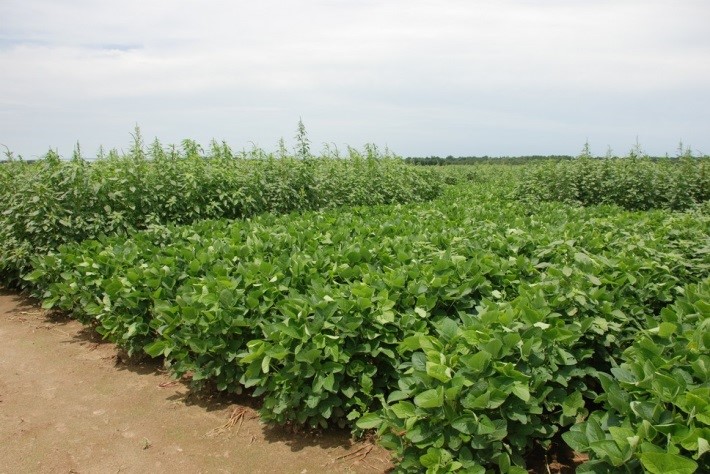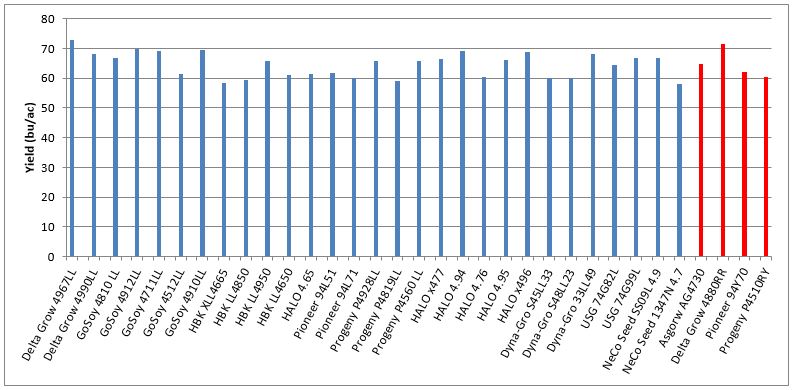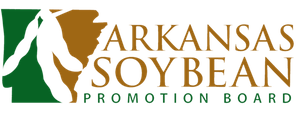Investigating Emerging Production Recommendations for Sustainable Soybean Production using the Full Season Soybean Production System
Investigators: Jeremy Ross, Gus Lorenz, and other select Extension Soybean Commodity Committee Members
Stated Goal: To investigate new and untested management inputs to improve soybean production in all Soybean Production System.
Specific Objectives:
(1) Continue to initiate test demonstrations for controlling economically damaging insect pests that often impact the all Soybean Production System. These pest complexes include Dectes Stem Borer, Grape Colaspis, Thrips, Potato Leaf Hopper, Soybean Looper, and Stink Bug.
One research study was conducted evaluating Bt Soybeans. Indications are these beans provide excellent control of defoliating caterpillars and to our surprise are very effective on corn earworm.
We conducted 6 trials on Corn earworm and 3 trials on soybean looper and evaluated several compounds that will be available to growers next year for the first time. They looked extremely good and provide equal to or better control as the current insecticides, including Prevathon and Belt.
We conducted 4 trials on stink bugs. Several new compounds but none look any better than existing products.
(2.) Continue to investigate optimum seeding rates and planting methods of soybean under a wide range of geographic regions and soil textures for the all Soybean Production System.
Figure 1. is a picture of a weed-free plot next to a plot with weed pressure.

Three studies at two different locations are evaluating maximizing soybean yields with different factors including seeding rates, enhanced inputs, and varieties.
One study is investigating the interaction between seeding rate, row spacing, and plant growth pattern in relation to weed competition and grain yield.
Figure 2. shows that both soybean varieties evaluated, the 15 inch row spacing had significantly higher soybean yields than either the 30-inch or 36-inch spacings.
Two additional studies are evaluating saved seed versus new seed, and evaluating late season fungicide, insecticide, and harvest aid application and seed quality. One study is investigating double-crop soybean following early-season corn.
(3.) Examine the potential of using new and innovative production factors, and how they influence soybean yields and profitability.
The Liberty Link/Roundup Ready Variety Comparison trials were planted at two different locations this year. Average yield data for both locations is shown in Figure 3.

Liberty Link varieties are yielding as well as the Roundup Ready varieties evaluated in this study. Soybean inoculants are still being evaluated at several locations, and two studies are evaluating foliar applied products to determine their effect on grain yield.
A soybean study evaluating plant architecture, seeding rate and row spacing was established at the Newport station to determine impact of pigweed. All studies were planted in mid-June, due to adverse weather conditions.
Edamame Production Recommendations
Investigators: Jeremy Ross, Trent Roberts, Nilda Burgos, Bob Scott, and Gus Lorenz
2013 Highlights: In 2011, the commercial production of edamame was introduced into Arkansas. Even though edamame is a soybean, the University of Arkansas Division of Agriculture did not have any production recommendations for edamame. The assumption was that edamame could be produced similar to normal soybean, but edamame specific recommendations were needed. Through funding from the Arkansas Soybean Promotion Board, we are currently conducting research to develop these production recommendations.
To determine the proper fertility recommendations of phosphorus, potassium, and nitrogen, research plots were established at the Pine Tree Branch Station and the Newport Research Station. From results of the past two years, phosphorus and potassium fertility recommendations for edamame are similar to normal soybean production. Additional nitrogen fertility did not increase fresh weight yield, but there are indications that additional nitrogen could enhance edamame flavor which we are still evaluating.
In addition to fertility research, we are conducting other agronomic research to evaluate edamame seeding rates, planting dates, appropriate row spacings, and inoculant evaluations.
Because edamame is harvested while still in the pod, enhanced scouting and earlier application of fungicides and insecticides are required to maintain a blemish free pod. Based on research results, it appears that the threshold of 4 to 5 stink bugs per 25 sweeps (one half that of normal production soybean) is required for edamame. These thresholds are still being evaluated.
Because edamame is a unique crop, many of the commercially available herbicides that are used for normal soybean production were not labeled for edamame production. Research studies were conducted to identify herbicides labeled for normal soybean production that could be used to control weeds effectively in edamame. Through this research, several commonly used herbicides have received labels for edamame.
Results of this research are currently being used to develop agronomic and integrated pest management recommendations to help edamame producers grow a high yielding, economical crop.

